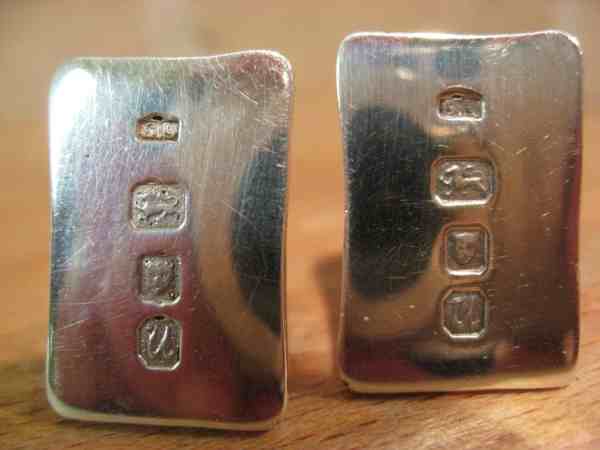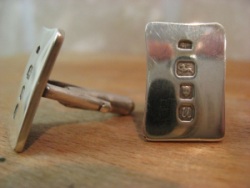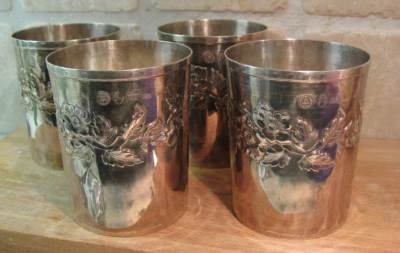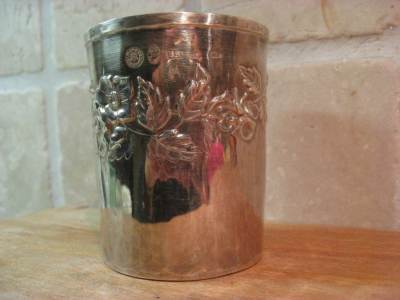by Alan
Yates
|
(click on images to enlarge)
SILVER HALLMARKS
REPRODUCING ENGLISH AND MISUNDERSTANDING ITALIANS

|

While on holiday in England a number of years ago I
bought a lovely pair of modern cufflinks the sole
decoration of which was the hallmarks.
However, I lost one so I asked a goldsmith friend if he
could recommend anyone who could copy the remaining one
for me.
He took away the survivor and returned a few weeks later
with a new pair.
He had made them himself by preparing a silicone mold
and pouring in molten silver.
The great surprise for me was that the copy was
almost identical to the original including the leopard head of the London Assay
Office hallmark (dated 1994).
I agree that comparing the two pieces an expert eye can
detect the difference between the original and the fake
hallmark. Perhaps just as well that no one can make out the
identity of the original maker (GL or CL).
But I'm still wondering.... faking small silver objects
would be so relatively simple?
|
|
Silver cufflinks:
reproduction on the left and original on the right
|
.
|
It has been interesting for me
to be able to compare the silver available in South
Africa, where I spent most of my life, and Austria,
where I have lived for the last five years.
In South Africa one can find silver from literally all
over the world, whereas in Austria it is almost all only
from here, Germany, Hungary, or what was Czechoslovakia.
While in South Africa I began, inter alia, my modest
collection of Indian colonial silver, but being a
silver-bug I also collected silver bits and pieces from
anywhere and everywhere, including a set of four beakers
(82 mm high, total weight 350 gms)
which are used every day in the home and have survived
remarkably well.
They have a series of hallmarks and Sterling
underneath and I suspected that their origin was Greece
or Cyprus.
The little "mystery" about their origin was solved when
Giorgio Busetto told me that they were made in Florence
(Italy) by the well-known silversmith Brandimarte.
The firm was founded in 1955 by Brandimarte Guscelli who
opened a small workshop in Via Ponte di Mezzo, Florence
where he designed, made and sold his works.
In 1957 the firm moved to Via del Ponte Sospeso and in
the 1970s the activity employed over 100 workers
becoming one of most prestigious Italian brands.
In 1974 the factory was transferred to Via Bartolini
where the activity was continued until 2004.
Brandimarte Guscelli died in 1994 and the business was
succeeded by his sons Stefano and Giada who continue to
manage the successful activity of the firm in present
days.

|


|
|
Alan Yates
- 2012 -
|
|

